Bones of Crows

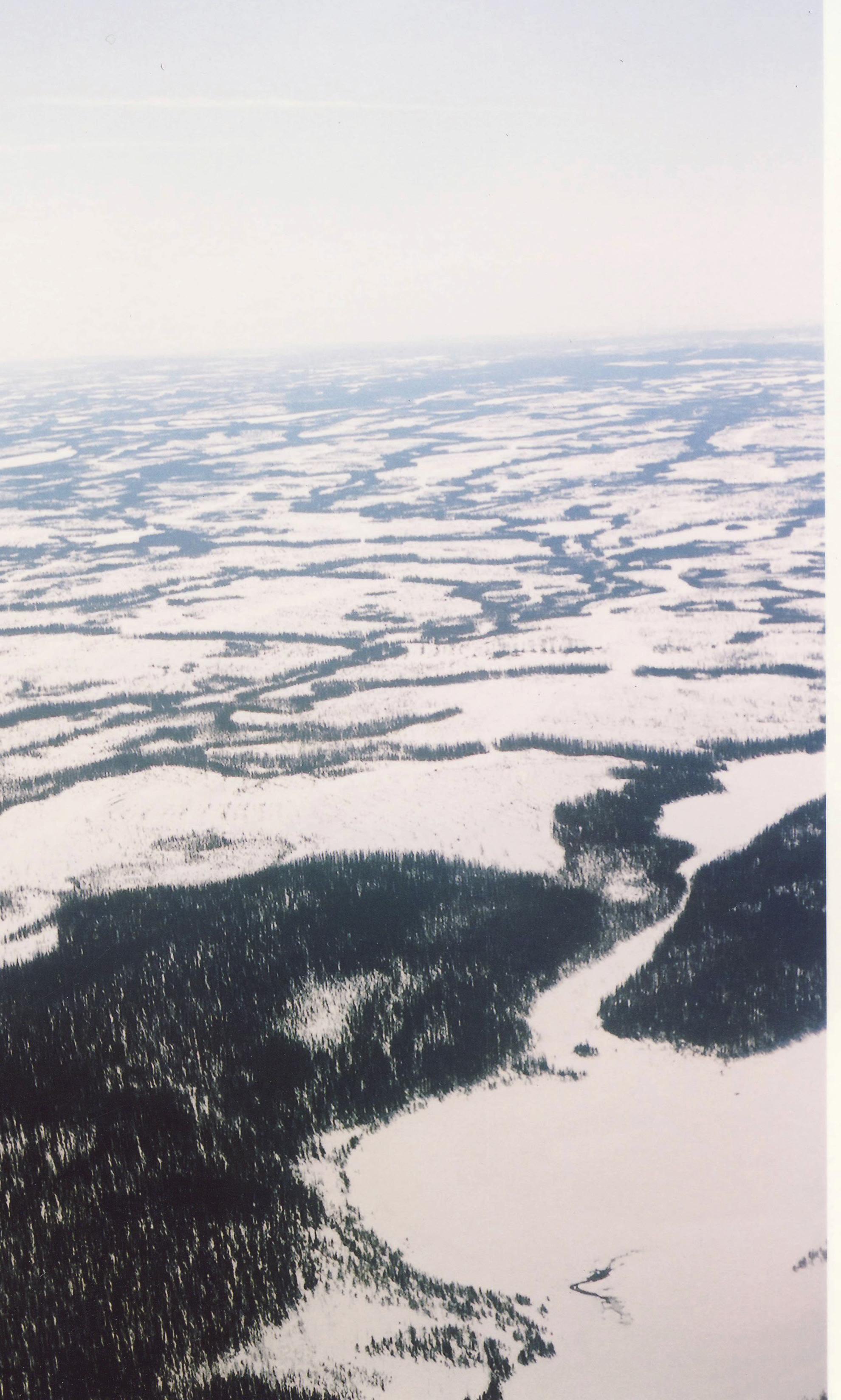
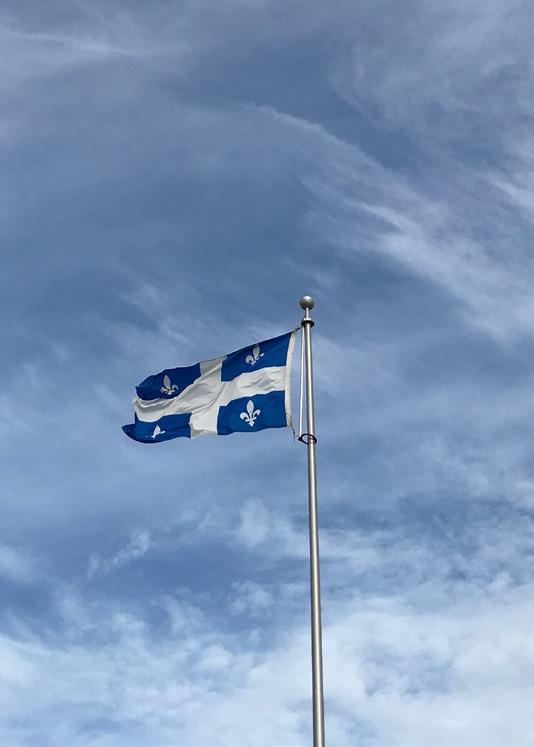
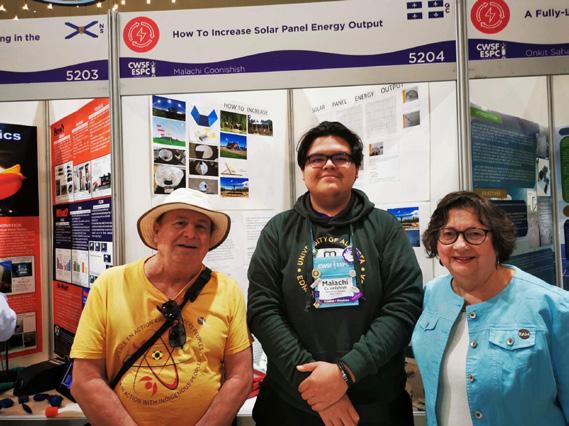
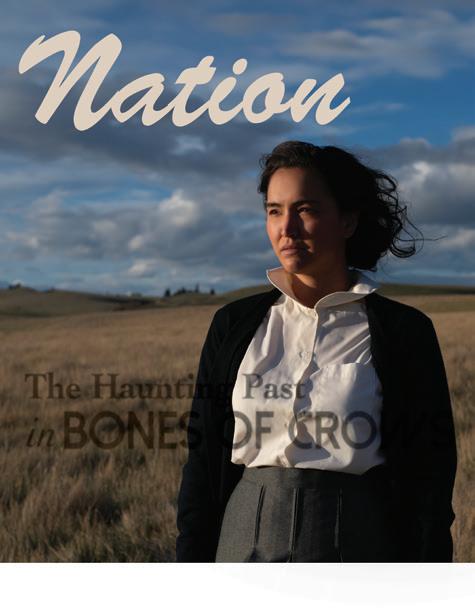


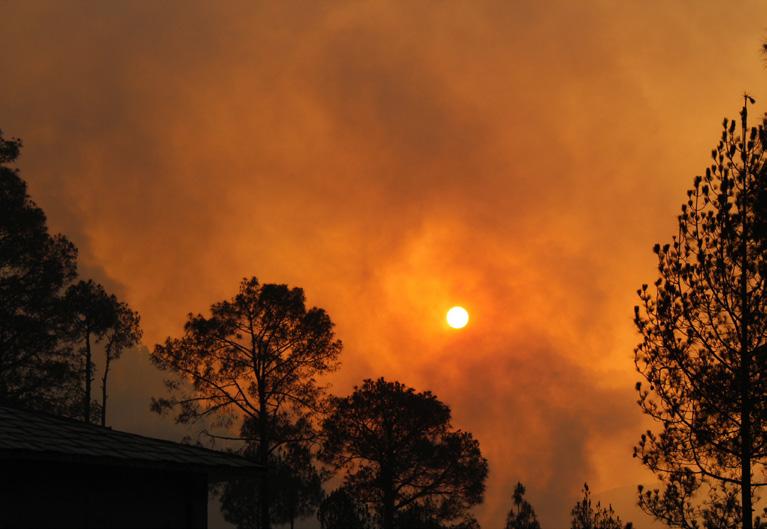

















 by Will Nicholls
by Will Nicholls
Many First Nations in the past were plagued by governments interfering in their finances. Worst was the third-party management in which the government would appoint a “manager” to handle all the finances and who would often be paid anywhere from $160,000 to $420,000 per year. This money would come out of the band’s budget. Obviously, no manager had an incentive to really fix things and lose that fat salary.
A study in 2008 saw many third-party managers still working for the same band for 10 years or more. Even federal auditors noted that there were poor decisions, and that they needed more guidance on how to pay off or lessen the debts of the bands. They also said there was no indication that these positions were publicly tendered, which would have indicated levels of expertise.
The system outlined the styles of financial management for First Nations. For some, there is no outside management. Others face recipient management where the band operates under a government approved plan. Co-managed arrangements have the band in partnership with a financial manager to handle the money. Finally, under third-party management the appointed financial manager has all the authority, and the band had no control over its own finances.
The most damaging of the federal policies allowed officials to place a First Nation under trusteeship if they believed the band was not capable of responsibly managing funds. Of course, the arguments between southern-based government employees did not always reflect the needs of the First Nation community. Some First Nations complained that the reasons they had financial difficulties
The system outlined the styles of financial management for First Nations

were due to chronic under-funding that didn’t reflect population growth in their communities. A First Nation in Manitoba said they only received $50,000 to maintain roads that would have cost $1 million to properly manage.
Statistics Canada figures show that both boil water advisories and problems with housing were higher on co-managed and third-party managed First Nations. Currently, Indigenous Services Canada has 93 First Nations under the infamous Default Prevention and Management Policy.
Possibly the numbers may decrease in the future. Changes that were not only recommended by First Nations but also by the Parliamentary Standing Committee on Indigenous and Northern Affairs.
Back in 2017 a committee report said, “The Committee is concerned that the Default Prevention and Management Policy has not prevented, nor addressed, financial defaults in First Nations communities in a meaningful way. In particular, it is concerned about the absence of enforcement or quality control measures in the policy to ensure that First Nations are receiving the capacity building opportunities required and to ensure that First Nations are moving out of default management as quickly as possible.... Third-party managers that do not support community development and do not actively work to help communities out of intervention ought to face repercussions.”

will@nationnews.ca news@nationnews.ca ADS: Danielle Valade: ads@nationnews.ca; Donna Malthouse: donna@beesum.com

SUBSCRIPTIONS: $60 plus taxes, US: $90, Abroad: $110, Payable to beesum communications, all rights reserved, publication mail #40015005, issn #1206-2642 The Nation is a member of: The James Bay Cree Communications Society, Circle Of Aboriginal Controlled Publishers, Magazines Canada Quebec Community Newspaper Assn. Canadian Newspapers Assn. Les Hebdos Sélect Du Québec. Funded [in part] by the Government of Canada. | www.nationnews.ca | facebook.com/NATIONnewsmagazine | Twitter: @creenation_news

The Cree Nation of Waskaganish has a new leader. Chief Greta Whiskeychan Cheechoo emerged victorious in the highly anticipated runoff election held on June 15, securing the mandate to guide the community for the next four years. Cheechoo, a respected figure in Waskaganish, brings a wealth of experience and a fresh vision to the position, promising a bright future for the Cree community.
Cheechoo’s win marks a milestone in the history of Waskaganish. As director of housing, coordinator for language, culture, sports and recreation, as well as an auditor for the finance and audit department, she brings an extensive background in various sectors to her new role.
The five candidates elected to join Chief Cheechoo on the Waskaganish band council are:
1. Tyrone Blackned: Known for his advocacy for education and youth empowerment, he brings a commitment to nurturing the potential of the next generation.
2. Conrad Blueboy: A familiar face in Waskaganish, Blueboy previously served as a councillor and will continue his service to the community.
3. Brenda Lynn Hester: With a background in community development and a passion for social justice, Hester brings
a compassionate and inclusive perspective to the council.
4. Hannah Moses (Jacob): Moses, recognized for her extensive cultural revitalization efforts, her priority is to celebrate and preserve Cree heritage.
5. Mary Jane Salt: Known for her leadership skills and community initiatives, Salt brings a passion for social welfare to the Waskaganish band council.
Chief Cheechoo’s mandate focuses on sustainable development, education and cultural preservation. She envisions a future where every member of the community has access to quality housing, employment opportunities and essential services. Additionally, she aims to strengthen the cultural fabric of Waskaganish, ensuring that Cree traditions and language continue to thrive.

As improving weather conditions and international firefighting reinforcements slowed the spread of forest fires in northern Quebec, evacuated residents of Ouje-Bougoumou and Chibougamau were happy to begin returning home June 12.

“The combination of SOPFEU’s tireless work together with the effectiveness of the swampy area to our northeast, our wide protective perimeter around the community, changing wind conditions, and a bit of rain have all significantly slowed the fire,” Ouje-Bougoumou Chief Curtis Bosum announced the previous day.
With strong winds carrying a fire from Mistissini’s outskirts swiftly towards OujeBougoumou on June 6, the province’s forest fire protection agency recommended an immediate evacuation of the community. More than 200 people with heightened medical issues filled three motor coaches in a quick move to a location with better air.
“You could really smell smoke in the air and the sky started turning orange, like an apocalyptic movie,” Deputy Chief Lance Cooper told the Nation. “As quick and crazy as it was, it went smoothly. That’s something that we’ve never seen. We’re finally home, grateful our community is still here.”
Most residents had no more than five hours to pack up and leave that Tuesday evening, with many travelling all night to the Cégep de Chicoutimi about 400 km away on the only road still open. Community workers made the rounds to ensure everyone made it out safely while the local clinic transported necessary medications and supplies to provide evacuees with essential services.
The Cégep and the City of Saguenay were praised for their generous hospitali-
ty, making the evacuation as comfortable as possible under the circumstances. In addition to meals and sleeping cots, local organizations and individuals offered support like babysitting. Amidst an international media circus, Cooper had an audience with Prime Minister Justin Trudeau.
“I told him straight out when you and my people go to sleep tonight, our land is still on fire,” said Cooper. “We rely on our land for our life, culture and traditions. I understand they’re focusing on human
life, but they’ve got to take account of the wildlife.”
Waswanipi was also badly affected by the wildfire smoke and moved to relocate its most vulnerable members to Quebec City in a “pre-evacuation” phase on June 7. While Mistissini’s power and land lines were briefly interrupted by the blazes, close coordination with leadership from different entities determined an evacuation wasn’t necessary.
“The Canadian Armed Forces has a coordination centre in Mistissini to
protect Chibougamau, Chapais and OujeBougoumou,” said Jason Coonishish, the Cree Health Board’s coordinator of emergency services. “That fire 334 already reached km 80 of the Route du Nord so there are many camps that burned down.”
With Chibougamau’s hospital temporarily closed and vulnerable residents being evacuated from several communities, the Cree Health Board struggled to secure sufficient beds in Montreal during the busy tourism season. Working with the city, it managed to keep many dialysis patients together at Hôtel-Dieu, where recent renovations ensure service continuity.
Wildfires have raged in Eeyou Istchee since early June, when a fire close to Chisasibi was contained to swamplands. Sections of forest were later cleared to make fire breaks outside Wemindji and Mistissini. Emergency teams created during the Covid pandemic were reactivated, with each community’s public safety officer (PSO) coordinating decisions with other organizations and Cree entities.
Fires crossed the Route du Nord, which remained closed until further notice. At press time the 113 was closed from Waswanipi to Senneterre and the 167 was closed north of Perch. Hundreds of kilometres of Trans-Taiga Road were impacted as firefighters worked to protect HydroQuébec infrastructure.
“It’s advised at this time not to go into forestry roads and the forest,” said Grand
Chief Mandy Gull-Masty. “SOPFEU is not able to carry out activities if people are in those spaces. We have issued a no open fire ban and are thinking of moving that to a zero fire ban because the forest is extremely dry.”
Northern Quebec continues to be exposed to high concentrations of fine smoke particles, which can quickly shift with the wind. On one smoky day, Nemaska enacted preventative measures and distributed N95 masks, which are now available in each community. Most communities have purple air sensors to help map the region’s air quality data.
While cyclical forest fires were once important for maintaining healthy forest ecology, climate change has created more dangerous conditions. While the planet has warmed by an average of one degree, scientists estimate the temperature rise is closer to 2-to-4 degrees in northern latitudes, causing more incidents extreme weather.
This year’s particularly dry season created the perfect recipe for fires caused by lightning or humans – most commonly cigarettes tossed from car windows or open fires not properly managed.
Emphasizing that such blazes are a learning opportunity, the Eeyou Marine Region Wildlife Board (EMRWB) is calling on Cree to submit their observations and traditional knowledge about how fires can

impact wildlife and habitat, both positively and negatively in the short and long term.
“A large number of fires reoccurring within a short time is not natural, and the landscape and local wildlife populations may eventually not be able to adapt to this pace,” said Angela Coxon, EMWRB director of wildlife management. “Most wildlife can flee in time, but slow-moving animals cannot escape a fast-moving forest fire.”
Although wildlife impacts are not yet known, Coxon suggested the flames could be especially disastrous for nesting songbirds and amphibians that require a very specific habitat. Fire-suppressing foam can be toxic to fish and amphibians, and block oxygen on water surfaces. Spawning fish will be impacted by the ash, debris and loss of shade-bearing riverside trees.
On the plus side, fires can spur smaller vegetation growth that provide food for species like moose and black bears. Species like woodpeckers and nighthawks thrive with easier access to insects. However, this is small consolation for the numerous Cree who live largely in the bush.
“All these damages to what was once a flourishing forest will have an everlasting impact to many of us land users,” lamented tallyman Allan Saganash. “Some Waswanipi traplines have been severely burnt by these raging fires and will not be productive for several years. Hold back the tears and let’s hope a fire of this size doesn’t happen again.”


Waskaganish’s social development department recently launched a merman challenge for the community’s male residents, bringing the latest viral trend sweeping First Nations to Eeyou Istchee.
Participants had to upload a picture of themselves in their best impersonation of the mythical sea creatures by a shore or pool to their Facebook walls with the hashtag #waskmerman. The top three most-liked pictures posted by June 19 were eligible for big cash prizes, with first place taking home $500, second $300 and third $200.
With only three entries to the contest, Russel Stephen was the big winner, followed by Madison Hester and Eldon Gilpin. Catching a glimpse of the Waskaganish beauties proved as elusive as catching an actual mermaid as two of the three apparently deleted their pictures after earning their prizes.
“We saw posts from other communities and decided to try it too,” said Anisha Jacob. “It was pretty funny. I was hoping for more contestants, but I think we didn’t have enough time for some people
to enter. We only had it over the weekend.”
Indigenous mermen have been washing up on Facebook pages since the start of June, when pictures from Ebb and Flow First Nation in Manitoba became widely shared and imitated. First Nations people from Saskatchewan and Ontario quickly got in on the action and it was only a matter of time until it reached Eeyou Istchee’s shores.
“Humour is our way of healing,” said merman Johnny Harper of the Anishininew First Nation. “I feel honoured to be given the opportunity to make people laugh and also help them heal for that one minute. We have our serious side, and we also take our fun side seriously.”
With some creative use of bed sheets for fins, an old bra and perhaps some other seafaring accessories, the Nation hopes to see more communities take up the challenge. Just take a good look around first to make sure you don’t have to make a quick swim to your underwater palace.
“Did you see the one from the Moose Cree?” asked Jacob. “There was one picture with a bear in the back – the guy didn’t know there was a bear behind him.”
Indigenous leaders expressed disappointment with Bill 32, Quebec’s proposed healthcare bill, which aims to establish cultural safety approaches for Indigenous individuals within the health and social services network.
While acknowledging certain advancements, the Assembly of First Nations Quebec-Labrador (AFNQL)
asserted that it is the responsibility of Indigenous communities, not the provincial government, to define and ensure respect for cultural safety.
AFNQL Chief Ghislain Picard said that the government’s contradictory approach undermines genuine awareness and cultural safety achievements.
The leaders also highlighted the need for addressing language barriers and recognizing traditional knowledge within the bill.
“Humour is our way of healing”
-Johnny Harper

Bones of Crows is not an easy film to watch but its creators feel there is healing to be found within the heaviness. Dene/Métis filmmaker Marie Clements’ epic story of one Cree woman’s life confronts hard truths in Canada’s dark history but is ultimately about Indigenous resistance and resilience. Originally pitched to CBC as a miniseries, Clements jumped at the opportunity to create a feature that delved into the multi-generational impacts of residential schools. While the film is now playing in theatres, a five-part miniseries going deeper into the family’s history will begin September 20 on CBC and APTN.

“It was a great opportunity to look at how multi-generational survival and resilience has been embedded in our families,” Clements told the Nation. “Understanding our parents or grandparents were working hard to build a future while also dealing with memories that would reveal themselves.”
Bones of Crows covers a century of shared history from an Indigenous perspective. The story focuses on Aline Spears, who was forced from her large and happy family in 1930s Manitoba into residential school. Enduring abuse and heartbreak, she becomes a code talker in the Second World War and has a family of her own but is haunted by past trauma until she finally confronts her abusers.
While the characters occasionally feel overloaded with every imaginable burden encountered by Indigenous peoples, the film’s fluid flow across time pulls viewers to the bigger picture – our ancestors’ hardships are very much connected to daily lives. It stands as a testament to survivors’ stories and an unapologetic defiance of colonial oppression. “It was extraordinarily challenging on every level, but we did not stop,” said Clements. “I

think a lot of Indigenous filmmakers in this country feel they’ve been born to tell this story. I felt honoured to get this opportunity because it hasn’t always been there for us. For everyone who leaned into it, it was more than just another project – it meant everything.”
Shooting began at the former Kamloops Indian Residential School shortly after 215 suspected unmarked graves were discovered on the site in 2021. While Clements braced for a last-minute relocation, she believes the community wanted the shoot to continue for “the truth to be seen and heard.”
“It was a profound experience to be shooting in the girls’ dorm and looking out the window at hundreds of people gathering for the memorial,” shared Clements. “When you’re working with a large Indigenous talent pool and crew, knowing that every single person on set has family that went to residential school, it’s a very different movie set.”
Black wings live in the mind’s eye of the central character, who sees the cloaks of Catholic priests and nuns descending upon her and her siblings like crows. Clements integrated memories of her mother and aunties into the script, feeling a responsibility to reclaim accounts she’d heard on a personal and community level.
Secwépemc actress Grace Dove infuses the grown-up Aline’s devastating pain and resilience with warmth and beauty. At the film’s premiere during last September’s Toronto International Film Festival, Dove said she knew taking the role would mean sacrificing a piece of herself, knowing she “was not going to be the same person coming out.”
Among the film’s talented cast is a cameo from legendary filmmaker Alanis Obomsawin when the Elder Aline testi-
fies before the Truth and Reconciliation Commission. Taking the film to small communities has sparked meaningful discussions with audiences about a past that is only now coming to light.
“That was an amazing experience, seeing community members understand for the first time that this Elder has experiences they never felt able to talk about,” explained Clements. “A lot have been revealing their truths. It’s meant to open hearts and minds and create change, not to point fingers.”
Cree viewers may recognize the voice during the orchestral finale of Bones of Crows as Mistissini singer-songwriter Siibii, even though it’s conveyed through the film’s actress. Accompanied by the Victoria Symphony, Siibii summoned their powerful performance from a very personal place.



“I literally drew from this thought of how powerful it would be if my grandmother was in the audience listening to me,” said Siibii. “I love my gookum so much and unfortunately with her health she hasn’t been able to see any of my shows. That was the moment I got to live vicariously through this character.”
Watching the film with three generations of family was particularly emotional, as Siibii’s grandmother had hidden her daughter in the bush to protect her from residential school, where she had been taken at age four.
“I think my mom, little sister and great aunt could not only see ourselves in the movie but feel our gookum’s having lived through these heartbreaking moments,” Siibii suggested. “It’s not based on a real person’s story, but it captures so many Indigenous peoples’ experiences in Canada.”
The film’s agonizing depiction of children being removed from their family felt even more heart-wrenching because it’s a phenomenon still occurring to some extent today – Siibii’s nieces and nephews have been in and out of social services. Despite the challenging subject matter, Siibii feels this is the perfect time for these stories to be projected onto big screens.
“Not only for Indigenous folks to feel validated in their family’s stories but to be available to the larger Canadian society,” explained Siibii. “These stories can’t be erased from the history book. As Indigenous peoples we should be allowed to grieve as long as we need and make art about it.”






From humble beginnings at his school’s science fair in Ouje-Bougoumou, Malachi Coonishish took his project all the way to the Canada-Wide Science Fair (CWSF) in Edmonton, where he received the Renewable Energy Award for his project, How to Increase Solar Energy Output.
“Joining a simple science fair opened a new mindset for the opportunities you’re given at a young age for becoming something important,” Malachi told the Nation. “I just needed a science project to bring up my grades – it’s brought me pretty far.”
The 17-year-old student credited his science teacher at Waapihtiiwewan School, Pouria Tabaeini, for sparking his idea of a renewable energy project that was honoured at the fair, held May 14-19. While Tabaeini provided the solar panel and some other materials, Malachi worked diligently after hours to discover a method for reflectors to improve a panel’s output by 25%.

“His creativity and intelligence are reflected in the design, the first time someone thought of putting the reflector completely around the solar panels,” said Tabaeini. “He tested different angles to see what would give the highest voltage reading. It shows that if you put in the dedication and effort, Cree students can be very successful.”
Malachi persevered with this project even after two teammates quit, realizing that it has the potential to boost solar power productivity around the globe for places that don’t receive as much sunlight. His motivations extend to the challenges faced by northern communities.
“From every four solar panels you build, you basically get a free one with my idea,” Malachi explained. “The more up north you go, the more expensive things cost. Our area doesn’t get as much sunlight as cities down south. Increasing the area size with something reflective directs more sunlight into my solar panel at a certain angle.”
A month after winning his local science fair, Malachi’s success at the Cree Nation’s regional event in Chisasibi
earned him a place at the Quebec Indigenous Science Fair in March. This annual gathering held primarily in Indigenous communities since 1998 has been hosted by Université Laval in Quebec City the past two years.
Among other Cree students at the provincial fair, Grade 5 students Angel MacLeod and Lennox Swallow determined the water pipes at Voyageur Memorial School in Mistissini are not clean and should be fitted with filters. Nemaska’s Jay Tanoush and Kayley Visitor studied insulation while Rory Henry Felstead and Kristopher Neeposh Decoursay studied the colours of fire.
“If you want someone to be interested in science, you just give them a problem that touches their day-to-day activities,” said the event’s principal organizer Normand Voyer. “When a project is meaningful to you, you put your heart into it and go deeper. The objective is to spark something, show the possibilities. That type of experience really impacts your trajectory in life.”
More and more people interacted with Malachi’s project at each science fair, with respected engineers, chemists and biologists asking about his work. Voyer said that judges were particularly impressed by Malachi’s presentation skills. Malachi was very surprised when he won second place, behind Rosalie Dubé from
Manawan, earning him an expenses-paid trip to Edmonton.
While he admitted to not being a “big travel person,” Malachi loved being in Alberta, where he visited attractions like the local science centre and gigantic West Edmonton Mall. The CWSF even organized a science activity at the University of Alberta, where Malachi thought it would be cool to study one day.
“I loved the whole time being there,” said Malachi. “I’m told a lot that my idea is very simple but very innovative. There were only about 15 to 20 of us who were Indigenous of the 396 participants. We should send more Indigenous kids – I want them to see what potential we have.”
He was accompanied by his grandmother Linda Coonishish, who was impressed by the event’s organization and the intelligence demonstrated by the budding scientists. She was happy to see Malachi making new friends, bonding with the Québécois contingent striving to communicate with him in English.
“His solar panels were a little damaged on the airplane,” she explained. “We had to do a bit of running around to find lights. He managed to reconnect everything and get it working just in time for when the judges were walking around.”
The fair attracted more than 7,000 visitors to the Edmonton Convention Centre in the first two days of public viewing, with more than 10,000 online visitors. Elizabeth Chen and Arushi Nath earned the top awards for projects on alternative cancer treatments and planetary defense.
Malachi’s Renewable Energy Award was one of about 150 prizes presented to students ranging from Grades 7 to 12, with some advancing to an international competition in Brazil. Each participant earned a future university scholarship – they need only declare they attended the CWSF in their application.
“We would like to congratulate Malachi on this fantastic achievement for his project on renewable energy,” posted the Grand Council of the Crees. “May it push you to continue to excel
and explore science and technology. The Cree Nation is proud of you and celebrates with you.”
Proudly representing the Cree Nation in traditional clothing, Malachi was inspired by the ingenuity of the country’s youth. While he was already considering pursuing medical studies, he’s now more open to becoming a scientist or engineer. He believes “in our area, we could use more big jobs like doctors or engineers.”
With one more year of secondary school, Malachi is already brainstorming ideas in the hope of reaching the 62nd CWSF, to be held at Ottawa’s Carleton University in May 2024. He’s also hopeful his success inspires other Cree youth to persevere in their studies.
“I have one more chance before I go to college,” said Malachi. “I’m thinking about improving my science project and about creating a whole new one. Everyone loved my idea and hope I go even further. Every day, people tell me congrats – that’s what I love about being up North.”


Critics say that new federal government legislation regarding Métis recognition in Ontario will greatly affect First Nations even though they haven’t been consulted on the bill.

Ontario chiefs discussed the issue at their annual assembly in Thunder Bay June 13-15. A consensus emerged to encourage all Chiefs, First Nation members and the public to express their opposition to the Métis Self-Government Recognition and Implementation Agreement to their local members of Parliament. The Chiefs of Ontario represents 133 First Nations in the province.
Wabun Tribal Council (WTC) is taking Canada to court to challenge the government’s unilateral move to grant Métis recognition in northern Ontario.
“It is unfortunate that it has to come to this, but these questionable claims to lands and rights have to stop,” said WTC Executive Director Jason Batise. “This issue cannot be politely stated anymore because there comes a point when we have to say something because people are claiming our First Nation culture,
our land and who we are as the original Indigenous inhabitants of this land. It has to stop.”
The WTC argues that Ottawa has not consulted with First Nations on an issue that will severely affect their treaty rights. The WTC represents the six First Nations of Chapleau Ojibwe, Brunswick House, Beaverhouse, Flying Post, Matachewan and Mattagami.
“Our view is that this will have serious and everlasting impacts on First Nation treaty rights,” said Batise. “This is not just a decision that affects our Wabun territory, it will also have far-reaching effects for First Nations across the province and the country.”
Batise argues that the Métis Nation of Ontario’s demand for recognition of new historic Métis communities in northeastern Ontario that are within the territories of the WTC is deeply flawed.
The council says these new communities do not meet established standards for recognition. This evidence was compiled in a paper last year by Darryl Leroux, a visiting professor of sociology at the University of Ottawa
and a leading scholar on the dynamics of racism and colonialism. Another report supporting this view was published by Robinson-Huron Waawiindamaagewin First Nation early this year.
“As Indigenous people we have had to deal with the horrific history of colonization that oppressed peoples, terrorized our children and families with the residential schools, did its best to destroy our culture and traditions and disenfranchised us on our own lands with systematic racism,” said Chief Chad Boissoneau of Mattagami First Nation.
“Now after fighting to have our treaties honoured, we are faced with changes that we had no participation in, and we were not consulted with to simply legislate an entirely new development in giving the Métis Nation of Ontario a claim to our lands. We have to stand together as Indigenous peoples across this country to fight back on this move by the government that smacks of colonial sentiment.”
The recent announcement by the Quebec government to exempt Indigenous students from certain provisions of Bill 96 has only ignited a wider language war. This battle of words revolves around the reform of the Charter of the French Language, which critics say raises barriers to education and cultural preservation for Indigenous communities.
For generations, Indigenous nations across Canada have fought for the recognition and protection of their ancestral languages. They have weathered storms of assimilationist policies and laws designed to erode their linguistic foundations.

Now Indigenous leaders, including the Cree and Inuit, have joined forces to amplify their voices against Bill 96. For instance, Mohawk chiefs from Kahnawake are preparing to meet with Quebec Indigenous Services Minister Ian Lafrenière and Justice Minister Simon JolinBarrette. Fearful of the bill’s impact on education, they are demanding not just a mere exemption but a total carve-out from the bill.
The Assembly of First Nations Quebec-Labrador and the First Nations Education Council have filed for a judicial review, challenging the very foundation of Quebec’s language reforms, saying the Constitution Act of 1982 guarantees inherent rights to culturally appropriate education and equitable treatment.
The Legault government exemptions from Bill 96 for Indigenous Cégep students were published in draft form in the Gazette officielle du Québec. French Language Minister Jean-François Roberge points to the proposals as a compromise, a delicate balance between linguistic protection and Indigenous respect.
But will the exemptions for Indigenous Cégep students serve as a beacon of hope, or will the linguistic battlefield claim further casualties?

Hi, my name is Kenny Blacksmith, Honorary Chief, and founder of Chief Essential Oils.
We all know our people su er from a high rate of diabetes, it’s complications, and many other health challenges.
As Cree people we have always believed Nature held many sacred gifts for our healing needs.
Chief Essential Oils is passionate about producing a range of pure, natural, high-quality, therapeutic grade essential oil products, designed to provide optimum bene ts for your health and well-being.
We invite you to explore our essential oils products and discover the power of nature’s healing for yourself.
We are here to help. A Cree First Nation product from Mistissini, Quebec, Canada.

Visit our website today and start your journey to a more balanced and healthy life.

Here’s another edition of the Nation’s puzzle page. Try your hand at Sudoku or Str8ts or our Crossword, or better yet, solve all three and send us a photo!* As always, the answers from last issue are here for you to check your work. Happy hunting.
Previous
How
Like Sudoku, no single number can repeat in any row or column. But... rows and columns are divided by black squares into compartments. These need to be filled in with numbers that complete a ‘straight’. A straight is a set of numbers with no gaps but can be in any order, eg [4,2,3,5]. Clues in black cells remove that number as an option in that row and column, and are not part of any straight. Glance at the solution to see how ‘straights’ are formed.

To complete Sudoku, fill the board by entering numbers 1 to 9 such that each row, column and 3x3 box contains every number uniquely.
For many strategies, hints and tips, visit www.sudokuwiki.org
If you like Str8ts check out our books, iPhone/iPad Apps and much more on our store.
The house shuddered. The external wall started to cave in. A bulldozer was relentlessly plowing through the wood-structure home and then stopped. A man wearing a hard hat went to check the interior and discovered a good friend sleeping away soundly. After a lot of intense shaking and shouting, the man woke up to discover that he had to leave his home before he was buried in it.
It was the final days of Fort George Island as a community, as it was being relocated to its new home of Chisasibi. People were being evacuated and homes were either being raised from their foundations and hauled over to the mainland or bulldozed over. Luckily, my friend lived to tell his tale and it always brought up memories of how we used to live before the modern world interrupted our way of life.
A decade later, forest fires were all around the territory, and one of them was engulfing the James Bay Highway. No one really evacuated but as we drove by some towering flames right by the side of the road, a work crew stopped us and ordered us to exit our vehicle, grab a shovel and do our mandatory firefighting job or be tossed in jail if we refused.
We fought the fire with gusto. After an hour of dodging flames and sparks, the heat was too much. We were given some warm water and allowed to leave after signing a short form. Six months later, I got a cheque in the mail, compensation for my forced labour.
Three decades later, I had to drive someone’s vehicle from Val-d’Or to Chisasibi, which is a long trip. Fortunately, I had a very talkative passenger and things worked out well – until we arrived in Chisasibi just as the community was being evacuated due to forest fires. I
down river, which led to the development of a new escape area in case the levee broke. We had to rush to what is now called the High Ground, where supposedly the onrushing waters couldn’t reach, as Chisasibi was washed away.

One time, a prank post caused a major ruckus as people panicked and scrambled to save their loved ones. Yes, evacuation does pose a lot of problems for those who enjoy their comfy homes.
This year, entire communities evacuated to other parts of the province, and this was a major sore point for everyone as forest fires threatened everyone in Abitibi and lower Eeyou Istchee communities. As I write this, I hope things have settled down.

On another note, Father’s Day had a surprise for everyone wishing to cook outdoors. They couldn’t because of the ban on outdoor activities like picnics, bonfires, cooking with an open fire, or anything to do with a spark. Even smoking was banned, but you know those nicotine addicts, nothing better than sucking in more smoke to fill those unhealthy lungs.
had to hitch a ride and spend the night in Radisson and then catch a flight from La Grande. It was a rough time as I’d had nothing to drink or eat for nearly two days.
Then there was the possible dam breach and flooding of our communities
Right now, I’m not sure if there will be further emergency evacuations and I’m hoping that this nightmare of hot dry weather fizzles out with some rain. Up North, it’s been over six weeks without any lifesaving water from the skies.
To everyone, stay safe and watch what you burn.
Up North, it’s been over six weeks without any lifesaving water from the skies.
It is always difficult to figure out what is happening with major issues in politics and how people are affected. A recent issue I have been watching makes me wonder how bright our leaders in government actually are. The federal government, which has been doing a fairly good job in dealing with Indigenous people in this country, went off the rails when they decided to push through legislation regarding the Métis Self-Government Recognition and Implementation Agreement.
The only thing the government did with this move was to create division and conflict between people. It was made without any consultation or participation of Indigenous leaders, organizations or peoples. The Chiefs of Wabun Tribal Council dealt with this negative effort by the government by taking them to court as their only means to stop this questionable and non-inclusive legislation.
What on earth is the federal government thinking? After all the terror of colonization, residential schools, the Sixties scoop and keeping my people marginalized and poverty stricken for hundreds of years, the government passed legislation that affects Indigenous treaties without any consultation.
Saner heads might be prevailing as the issue of this draconian legislation is brewing. But as far as I know there has not been a meeting of minds in terms yet of pausing legislation and to address the concerns of First Nations.
There remain many issues that must be addressed in treaty negotiations and righting the wrongs of a few hundred years of colonization, even though this is not a conservative government that stomps on our rights and creates conflict. We also have the benefit of a minority government which helps in making sure that the Indigenous-friendly New Democratic Party can hold them to task.
On a more positive viewpoint, a $10 billion settlement agreed to by the federal and Ontario governments has been reached to respond to the claim by the Chiefs of the Robinson Huron Treaty Litigation Fund concerning unpaid annuities for exploiting the resources of Indigenous lands since the mid-19th century.

Under the treaty signed by the British crown with Robinson Huron First Nations in 1850, members were paid annual amounts of only four dollars. Incredibly, that amount has not increased although governments, resource extraction corporations and other business have seen billions in wealth attained though initiatives on Indigenous lands.
Here is an example of a fair meeting of minds and meaningful compensation to right past wrongs. I salute the federal and provincial governments for settling this injustice in a good way. Now I look forward to this process developing to its just result while I know myself and Indigenous leaders, organizations and people across Canada are looking at this as a precedent as we all were cheated with the same
pay system of a pittance over more than 170 years.

The last thing we need in this country is more division and conflict, so it is good to see that governments do realize that any policy that promotes this negative reality can only lead to terrible results. On the other hand, consulting with Indigenous leadership and peoples will create an environment of trust and lead to financial growth, resource development and a fairer sharing of wealth for us all. It is time to make things right.



